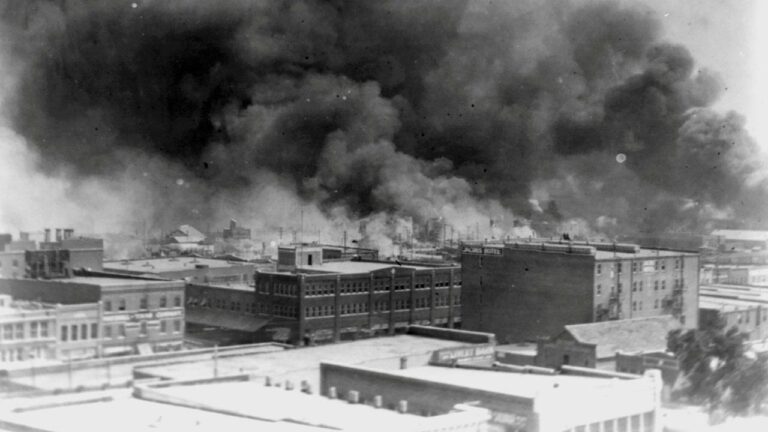Archaeologists Unearth Remains in Search for Tulsa Race Massacre Victims
In a compelling quest to uncover the tragic history of the 1921 Tulsa Race Massacre, archaeologists have recently exhumed the remains of one individual, with plans to unearth a second set. These efforts have reignited in a Tulsa cemetery, where the past is being brought to light.
Out of the 22 sets of remains discovered during the ongoing excavation in Oaklawn Cemetery, these two are distinctive in that they were found in simple, wooden caskets, aligning with historical records such as newspaper articles, death certificates, and funeral home documents, as confirmed by Oklahoma state archaeologist Kary Stackelbeck.
Stackelbeck explained, “That basically suggests that we had a number of adult male individuals that were supposed to be buried in simple, wood coffins.”
Progress Towards Identifying Tulsa Race Massacre Victims
On Thursday, one set of remains was transported to an onsite forensics laboratory, while the second is slated for excavation on Friday. The gender of both individuals has yet to be determined.
This latest search, initiated on September 5, marks the third endeavor to locate the remains of the estimated 75 to 300 Black people who lost their lives during the 1921 massacre. A violent white mob descended upon the Black neighborhood of Tulsa, Greenwood, resulting in the burning of over 1,000 homes, widespread looting and destruction, and the obliteration of the thriving Black Wall Street business district.
The Uncovering Continues
It’s important to note that none of the recovered remains have been definitively confirmed as victims of the horrific violence.
Previous search efforts have led to the discovery of 66 sets of remains, with 22 of them forwarded to Intermountain Forensic in Salt Lake City for identification purposes. Of these, six sets have yielded genetic genealogy profiles that offer potential surnames and geographical information. These connections span seven states: North Carolina, Georgia, Texas, Mississippi, Louisiana, Oklahoma, and Alabama, as reported by Tulsa Mayor G.T. Bynum.
The chosen search area was determined through ground penetrating radar, which revealed what seemed to be “makeshift” grave markers, including upright bricks and flower pots arranged in rows, according to Stackelbeck.
A Clue from the Past
The search area is believed to be close to where a man named Clyde Eddy recounted an experience from the 1990s. Eddy, as a 10-year-old boy at the time, claimed to have witnessed the preparation of Black bodies for burial shortly after the massacre. However, he was instructed to leave the area.
Bynum, who first proposed the search for victims in 2018 and allocated $100,000 for it after previous attempts fell short, acknowledged the immense challenge of locating people who were killed and interred over a century ago.
“It’s not that we’re trying to find a needle in a haystack, it’s that we’re trying to find a needle in a pile of needles,” Bynum expressed. “We’re trying to find people who were murdered and buried in a cemetery… without the intent of being found.”
A Continuing Pursuit for Justice
This search for answers occurs against the backdrop of three living survivors of the Tulsa Race Massacre, who are appealing a ruling that dismissed their lawsuit seeking reparations from the city and other defendants for the destruction of the once-thriving Black district. The search for the past is a pursuit of justice and remembrance, aiming to shed light on a dark chapter in history.

